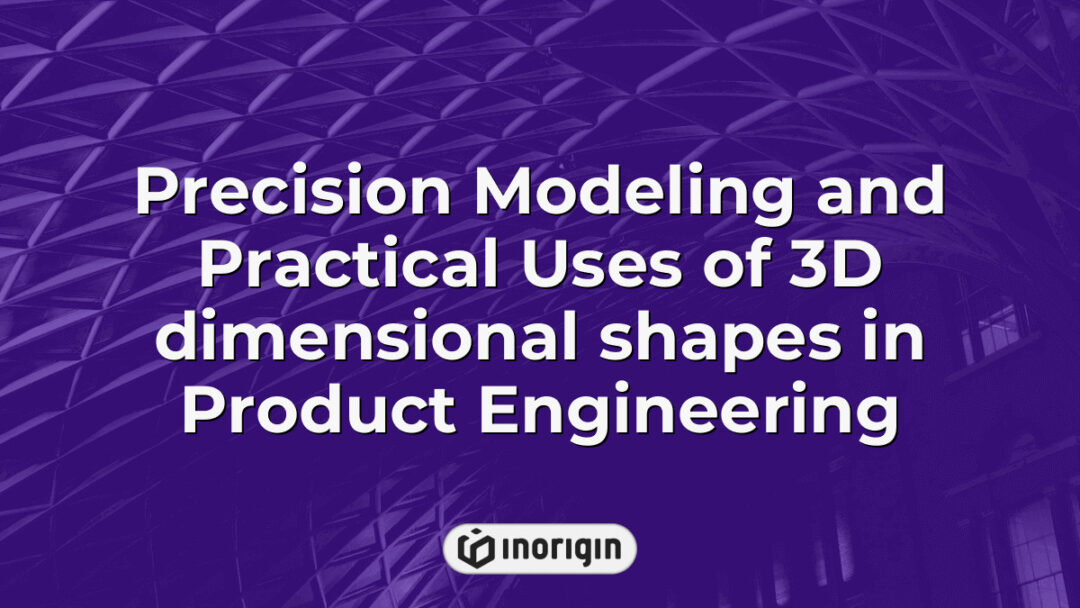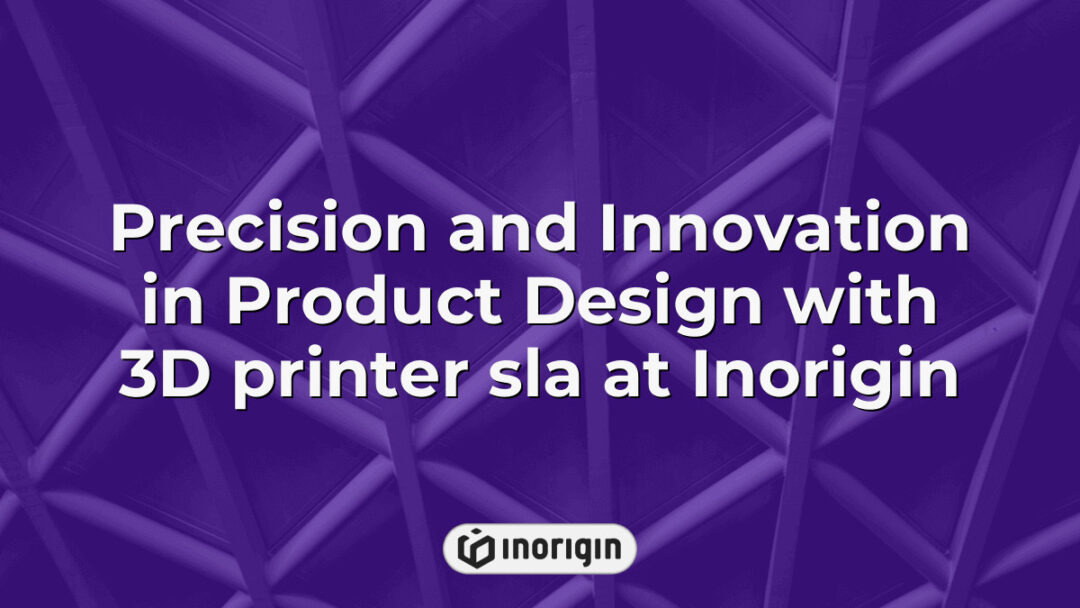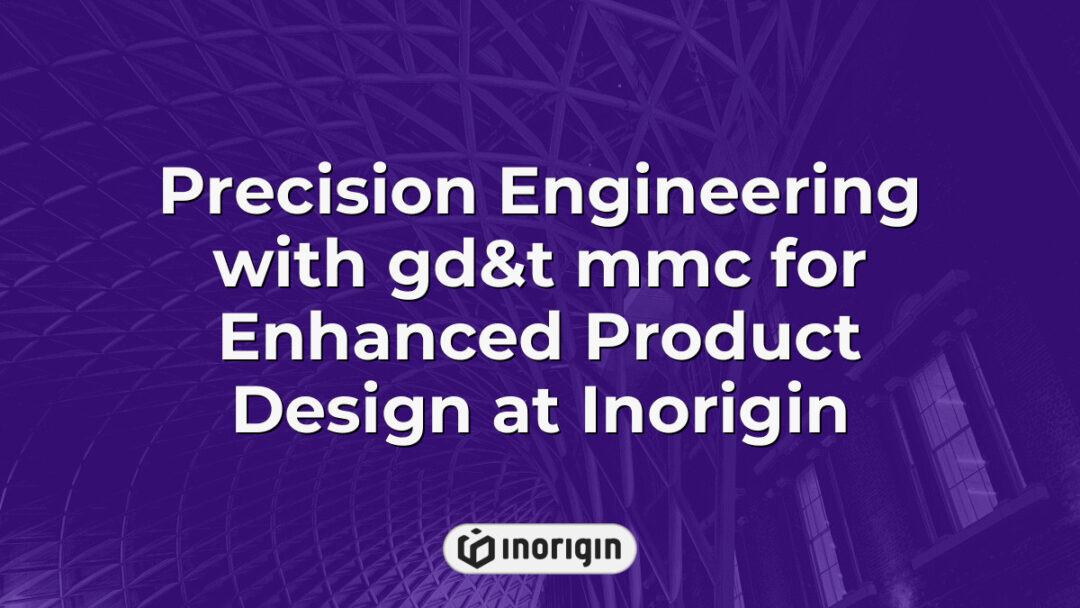In an era characterized by rapid technological advancement and increasing market demands, the role of design engineering services has emerged as a pivotal component in the development of innovative products and solutions. These services encompass a multidisciplinary approach that integrates creativity, technical proficiency, and strategic problem-solving to address complex challenges across various industries. By leveraging cutting-edge technologies and best practices in design methodologies, organizations can not only enhance product functionality and sustainability but also accelerate time-to-market, thereby gaining a critical competitive edge. As industries continue to evolve, the significance of robust design engineering services becomes ever more pronounced, underscoring their essential function in shaping the future of engineering and design.
| Αποψη | Key Takeaway |
|---|---|
| Importance of Design Engineering Services | Design engineering services drive innovation by combining creativity and technical expertise to deliver market-ready, functional products efficiently. |
| Core Elements | Defining clear project scope and producing precise technical drawings are fundamental steps for successful engineering outcomes. |
| Technology Advantages | Advanced tools like 3D modeling, simulation (FEA/CFD), and cloud collaboration significantly improve accuracy, reduce development time, and enhance teamwork. |
| Industry Adaptability | Design engineering services support diverse industries such as automotive, healthcare, and consumer products by tailoring solutions to specific market demands. |
| Partner Selection Criteria | Choosing a design engineering partner requires evaluating technical skills, industry expertise, alignment with project goals, and capability to implement innovative solutions. |
| Μελλοντικές προοπτικές | Emerging trends focus on sustainability and the integration of AI and machine learning to optimize resource use and boost product resilience. |
| Ξεπερνώντας τις Προκλήσεις | Addressing technical complexities, compliance variations, and resource constraints with strategic planning enhances project success and product quality. |
Key Components of Design Engineering Services
The essence of design engineering services can be likened to the foundation stones of a grand structure, where precision and creativity intertwine to form robust solutions. Central to these services are the key components that not only define the project scope but also elevate the standard of outcomes. First, project scope definition plays a crucial role as it establishes the parameters and expectations, ensuring that all stakeholders are aligned with the objectives. Subsequently, technical drawing emerges as a significant element, serving as the visual language that communicates intricate details and specifications necessary for manufacturing and construction. Through effective design engineering solutions, these components work synergistically, allowing for innovation and efficiency while addressing potential challenges and constraints.
While technical expertise marks the effectiveness of these services, the human element cannot be overlooked; the ability to understand client needs and integrate feedback enhances the design process. Collaboration and communication among multidisciplinary teams further enrich the development of solutions, underscoring how essential teamwork is in navigating complexities. Studies reveal that projects benefiting from comprehensive design engineering services yield cost savings of up to 20% due to early identification of potential risks and feasible alternatives. The interplay of these key aspects not only ensures successful project execution but also contributes significantly to overall value creation within the engineering discipline.
Industry Applications and Case Studies
Industry applications and case studies present a compelling narrative within the scope of design engineering services, revealing a system of synergy between theory and practice. The realm of industrial design, particularly when combined with systems engineering, showcases a multitude of methodologies that refine products whilst enhancing performance; this interplay results in process automation that brings efficiencies across various sectors. For instance, in manufacturing, a case study involving an automotive company illustrates how integrating advanced systems engineering practices led to significant reductions in production time and costs—statistically, a decrease of 20% in assembly line duration was recorded. Transitioning to the healthcare sector, the utilisation of smart systems in designing medical devices has transformed patient care, ensuring safety while also streamlining processes; this was manifested during the pandemic when rapid development cycles became imperative. Such applications highlight the versatility and effectiveness of design engineering services across industries, from aerospace to consumer goods, exerting a marked influence on performance and productivity. Each example reinforces the necessity of evolving methodologies to meet industrial demands, confirming that the collaboration between design, engineering principles, and modern techniques is not merely beneficial but essential in navigating the challenges of contemporary markets.
Role of Technology in Transforming Design Engineering
The role of technology in transforming design engineering is both significant and far-reaching, reshaping processes across various sectors. Technology not only enhances the efficiency of design workflows but also facilitates creativity and innovation. For instance, the adoption of 3D engineering solutions has been instrumental in visualising concepts that were previously difficult to articulate. Furthermore, the integration of digital tools and the latest software has allowed for unprecedented collaboration among teams, regardless of geographical boundaries. To illustrate the transformative impact of technology in design engineering, consider these aspects: 1) Real-time data analysis enhances decision-making processes; 2) Virtual prototyping reduces material waste and costs; 3) Automation of repetitive tasks enables engineers to focus on complex problem-solving; and 4) Cloud-based platforms foster better communication among remote teams. Each of these facets reflects a shift in how engineering challenges are approached, demonstrating a clear move towards more innovative methodologies. Companies embracing these technological advancements are likely to gain a competitive advantage in the evolving marketplace; thus, the ongoing integration of technology within design engineering practices will continue to drive future developments and efficiencies.
Choosing the Right Design Engineering Partner
Choosing the appropriate design engineering partner encompasses various factors, particularly in areas such as mechanical engineering and project management, where expertise can significantly influence project outcomes. In this context, collaboration is vital; thus, selecting a partner who adheres to established quality standards can streamline processes and enhance efficiency. This decision is not merely a matter of availability or cost; it involves assessing myriad aspects, including technical capability, industry experience, and alignment with project goals. Furthermore, evaluating potential partners should incorporate their past performance reviews, adaptability to technological advancements, and proficiency in managing complex engineering requirements.
- Assessment of previous project outcomes, focusing on quality metrics.
- Compatibility with specific engineering disciplines, such as mechanical engineering.
- Examination of their project management protocols and team dynamics.
- Capability to innovate and integrate technological solutions effectively.
The selection process requires a thorough understanding of both the project’s needs and the design engineering partner’s strengths. Engaging with a partner that not only meets the technical specifications but also shares an organisation’s vision can yield substantial benefits. Therefore, the implications of this choice resonate throughout the project lifecycle, influencing timelines, budget constraints, and overall success. Professional partnerships, when aligned correctly, provide the necessary framework to navigate the complexities inherent in engineering projects, ensuring that quality standards are not just met but exceeded.
Future Trends in Design Engineering Services
The future trends in design engineering services indicate a significant shift towards sustainable practices, driven by the pressing need to address environmental concerns. Recent studies suggest a surge in demand for optimized solutions that not only meet regulatory standards but also enhance overall efficiency and performance. This transformation is likely to be propelled by the integration of advanced technologies such as artificial intelligence and machine learning, which enable the development of innovative designs while minimising resource consumption. With various industries increasingly recognising the value of intellectual talents, the emphasis on interdisciplinary collaboration is expected to grow. Consequently, design engineers will be required to adopt a holistic approach that embraces sustainability and resilience, ensuring that their solutions not only cater to immediate needs but also contribute to long-term environmental goals. Hence, companies that prioritise these trends may find themselves better positioned to thrive in an evolving market, fulfilling both client demands and societal expectations.
Συχνές Ερωτήσεις
What qualifications should a design engineer have?
Design engineering services demand an array of academic aptitude and analytical acumen, as this field not only requires technical prowess but also an understanding of practical applications within diverse industries. Initially, a design engineer ought to possess a strong foundation in science and mathematics, often necessitating degrees in engineering disciplines such as mechanical, civil, or electrical engineering from accredited institutions. Furthermore, familiarity with contemporary design software—like AutoCAD, SolidWorks, or CATIA—significantly amplifies one’s effectiveness in creating detailed plans and prototypes. Additionally, collaboration and communication skills are paramount; engineers must adeptly articulate their ideas and work harmoniously within multidisciplinary teams, bridging the gap between technical specifications and managerial directives. This nexus of technical knowledge, software skill, and interpersonal ability creates a formidable framework for success in the design engineering sector.
Furthermore, obtaining licensure or certification, such as becoming a Chartered Engineer or earning Professional Engineer status, represents an essential milestone, often elevating credibility and promoting trust among peers and clients alike. Besides technical qualifications, research indicates that field experience, whether through internships or hands-on projects, enhances understanding and fosters an intuitive grasp of real-world challenges that theoretical study might not elucidate adequately. Thus, the design engineer’s adaptability, informed by ongoing education and industry trends, enhances problem-solving capabilities, ensuring innovative solutions in today’s ever-evolving technological terrain. This blend of qualifications positions design engineers not merely as technicians, but as integral contributors to the advancement of engineering practices.
How do design engineering services impact product lifecycle management?
Design engineering services play a significant role in shaping product lifecycle management, fundamentally influencing every stage from conception to retirement. At the outset, these services facilitate the creation of innovative designs through precise technical specifications and iterative prototyping processes. This ensures that products align with market demands while adhering to regulatory standards, ultimately reducing time-to-market. Subsequently, during the production phase, engineering services offer crucial feedback loops that allow for continual improvement based on real-time data, addressing issues that may arise in manufacturing. Furthermore, as products move through their various phases—introduction, growth, maturity, and decline—design engineers’ insights can lead to enhancements, adaptations, or even radical redesigns based on user feedback and technological advancements. For instance, automotive companies frequently iterate on vehicle designs to extend their market relevance and comply with safety regulations, demonstrating how these services adapt to changing circumstances. Hence, the integration of design engineering services significantly streamlines operations, optimises resource allocation, and enhances overall product quality throughout its lifecycle, culminating in increased customer satisfaction and prolonged market presence.
What are the common challenges faced in design engineering projects?
In the intricate world of design engineering projects, the challenges faced can often resemble a complex puzzle waiting to be solved. Obstacles such as technical discrepancies, regulatory compliance issues, and resource limitations can significantly hinder progress. As projects unfold, it becomes increasingly clear that certain factors need careful consideration, establishing a critical interplay between various elements. The trajectory of a project can shift dramatically depending on how these challenges are navigated, affecting timelines and output quality.
- Τεχνικές Προκλήσεις
- Incompatibility among design tools can stall workflows
- Knowledge gaps in team skills may necessitate retraining
- Frequent iterations may arise from unforeseen technical flaws
Regulatory and Compliance Issues
- Variations in national standards can complicate product development
- Documentation errors leading to compliance delays
- Continuous updates in regulations require ongoing adjustments
Resource Limitations
- Budget constraints often lead to cuts in essential areas
- Limited access to advanced technology can stifle innovation
- Workforce shortages may extend project timelines
To address these multifaceted challenges requires not just skill but also a strategic approach, balancing the urgency of delivery with the need for thoroughness and adherence to standards. These difficulties serve as crucial reminders of the complexities inherent in design engineering, where the line between success and failure can be razor-thin. As such, the interplay of creativity and practicality remains indispensable, pushing teams to innovate while also adhering to established norms. The unfolding narrative of each project tells a story of resilience, adaptation, and an unwavering commitment to quality amidst pervasive hurdles.
Σύναψη
In the grand theatre of engineering, design services waltz elegantly, promising innovation while often tripping over the complexities of reality. The bewilderment of lofty claims contrasts sharply with mundane outputs, revealing an industry where brilliance occasionally masquerades as mediocrity. Thus, the curtain rises on a performance both captivating and absurd.
Σχετικές αναρτήσεις:
- Ανάπτυξη και σχεδιασμός προϊόντων με γνώμονα την ακρίβεια για απρόσκοπτη ενοποίηση της αγοράς
- Υπηρεσίες Μηχανικής Σχεδιασμού Προϊόντων Προώθηση της Καινοτομίας και της Αριστείας Παραγωγής στην Inorigin
- Product Design Engineering Services Driving Innovation and Market Success at Inorigin
- Υπηρεσίες Τεχνολογίας Προϊόντων Εταιρείες που οδηγούν την καινοτομία μέσω σχεδίασης ακριβείας και προηγμένων πρωτοτύπων
- Υπηρεσίες μηχανικής προϊόντων που οδηγούν την καινοτομία και την απρόσκοπτη είσοδο στην αγορά στην Inorigin
- Κρίσιμα Βήματα και Στρατηγική Εστίαση στα Στάδια Ανάπτυξης Προϊόντος στην Inorigin




